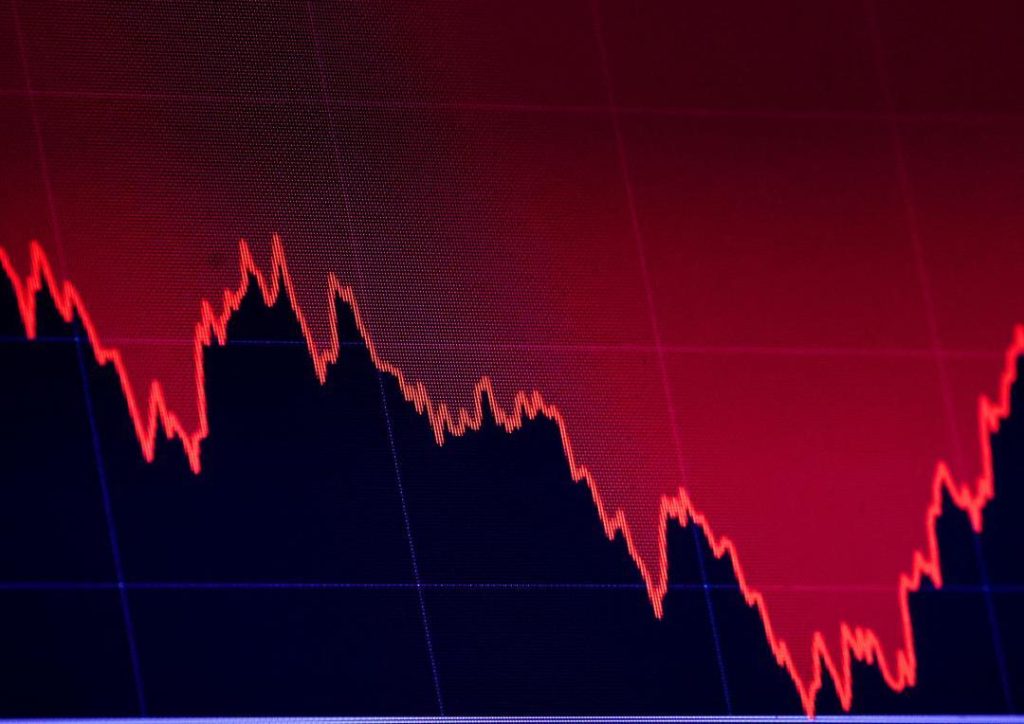
Bloodbath in US Markets: S&P 500 and Nasdaq at Over 6-Month Lows
The US stock market has been experiencing a tumultuous few days, with the S&P 500 and Nasdaq indexes plummeting to over six-month lows on Monday. The massive selloff was fueled by concerns over US President Donald Trump’s upcoming announcement of tariff plans, which has sent investors scrambling for cover.
As of 09:44 am (US time), the S&P 500 was down 81.90 points (1.47%) to 5,499.04, while the Nasdaq was down 409.48 points (2.36%) to 16,913.52. The indices have been under pressure in recent weeks, but Monday’s selloff was particularly stark, with both indexes experiencing their largest one-day declines since mid-January.
The Dow Jones Industrial Average was also not immune to the selloff, falling 550.14 points (1.81%) to 27,933.26. The broader S&P 500 and Nasdaq Composite indexes have now fallen for three consecutive days, with the S&P 500 down 3.3% and the Nasdaq down 4.1% over that period.
The culprit behind the selloff was a report that US President Donald Trump is set to announce new tariff plans, which has sparked concerns over a potential trade war with China. The news led to a massive sell-off in stocks, with investors rushing to dump their holdings in anticipation of a potential economic slowdown.
The sell-off was also fueled by concerns over the impact of a potential trade war on the global economy. Many investors believe that a trade war would lead to a significant slowdown in global trade, which could have a negative impact on economic growth.
“The market is reacting to the uncertainty around the tariffs and the potential impact on the economy,” said Michael Antonelli, market strategist at Robert W. Baird & Co. “Investors are worried that a trade war could lead to a recession, and that’s causing them to sell.”
The selloff was also exacerbated by a decline in technology stocks, with the Nasdaq-100 index falling 2.6% to 7,644.13. The index has now fallen for four consecutive days, with tech stocks being particularly hard hit.
The Dow Jones Industrial Average’s decline was led by a 3.6% fall in shares of Boeing Co., which was responding to a report that the US Federal Aviation Administration had ordered the airline to ground its 737 MAX fleet. The move came after the crash of an Ethiopian Airlines 737 MAX in March, which killed all 157 people on board.
The selloff in US stocks was also fueled by a decline in commodities, with oil prices falling 2.1% to $63.56 per barrel. The decline in oil prices was driven by a report that the US is considering releasing some of its strategic oil reserves to help stabilize the market.
The selloff in US stocks is also having a ripple effect on global markets, with stocks in Europe and Asia also falling sharply. The FTSE 100 index fell 1.4% to 7,392.93, while the Nikkei 225 index fell 2.1% to 21,557.93.
In conclusion, the bloodbath in US markets is a clear indication of the uncertainty and volatility that exists in the global economy. The announcement of new tariff plans by US President Donald Trump has sent investors scrambling for cover, with both the S&P 500 and Nasdaq indexes falling to over six-month lows.
The selloff is not limited to the US, with global markets also being impacted. The decline in commodities, particularly oil, is also adding to the uncertainty, and it remains to be seen how the situation will unfold.
Sources:
https://www.reuters.com/markets/us/futures-tumble-tariffs-fuel-recession-worries-2025-03-31/




